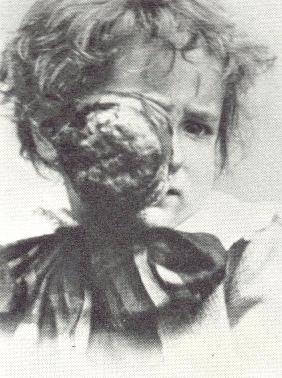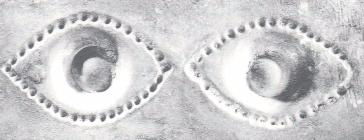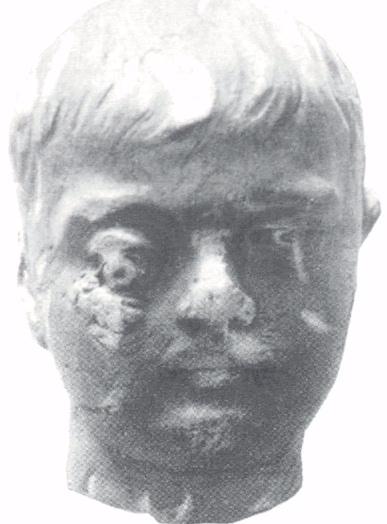
| Pathology |
|
|
Like all pathology, that of Hippocrates was the reflex of the prevailing philosophy. The Ionic school held that there were four elements: water, fire, earth and air, and that these gave to matter its four cardinal properties: moisture, warmth, dryness and coldness. this was translated in terms of physiology as four cardinal humours: blood, mucus, yellow bile and black bile. Health resulted from the proper and proportionate admixture of these humours in the body: disease implied a disturbed balance. Left to itself the disturbance ran through three stages -- crudity, when the disturbance occurs, coction, when the body prepares to expel the disordered humours, and crisis, when that process takes place. There were in addition seven injurious humours passing from the brain to the tissues, this constituting the catarrhal process. One humour passed into the nose and the two affected the eyes, one of these producing the discharge in ophthalmias and the other affecting vision without producing an external discharge.
|
This fanciful stuff apart, the Hippocratic school was responsible for some sound observations. They recognized not only the inflamed eye but such external conditions as could be appreciated without any detailed knowledge of anatomy; they were acquainted with such things as chalazion, pterygium, ectropion, entropion, trichiasis, nystagmus and squint. Though no detailed clinical appreciation was achieved. it is characteristic of their powers of observation that they recognized blindness following haemorrhage -- a close approach tot he blindness from optic atrophy consequent on haematemesis and metrorrhagia.Alexandrian ophthalmology, as preserved by the writings of Celsus, shows considerable advance in the recognition of disease. A clear distinction is made between moist and dry ophthalmia (ophthalmia and xerophthalmia), and a good account of trachoma is given under the term aspritudo, the name trachoma not being introduced till three centuries later by Severus. A number of additional external conditions, such as proptosis, and lagophthalmos, are also described, and much more definite information is given.
The ocular pathology of Galen marked but little progress. it was more systematized, and recognized eye disease as resulting from affections of (1) the crystalline body, the essential organ of sight; (2) the brain and visual nerve, involving disturbances in the visual spirits proceeding from the brain along the visual nerve to the essential organ of sight; and (3) of other parts of the eye distinct form the essential organ of sight. Disease of the crystalline is shown by glaucoma, the greenish discoloration being produced by drying of the of the lens; the condition is incurable, affecting as it does the essential organ of sight. Disease of the brain and visual nerve is shown typically by cataract, the corrupt humour settling in front of the lens. Disease of other parts of the eye affects the pupil or the space between the pupil and the lens, the aqueous and pneuma being at fault.
In the succeeding centuries this doctrine became dogma. The Byzantine commentators added little of their own and the Arabians could not break away from the concept of ophthalmias and of corrupt humours settling in the eye, though their clinicians were responsible for some remarkable observations. Thus Rhazes (Ar-Razi) recognized the pupil reaction to light, whilst Sams-addin described "headache of the pupil" -- probably the first, though vague, recognition of acute glaucoma, pannus too is first described in Arabian writings.
The weary process of commentaries upon commentaries dragged on even after the Renaissance. But little had been gained in the meantime except some clearer definition. The humoral theory of disease underlay the separation of blindness into two varieties, gutta serena and gutta opaque. In the first the pupil was unclouded by the morbid humour, in the second it was affected. Gutta serena and suffusio nigra was sometimes used in contrast, but more frequently as synonymous with glaucoma, blindness with a greenish pupil. That no real understanding underlay this classification is obvious enough.
The 17th century saw the overthrow of the theoretical basis of Galen's ophthalmology, but clinical ophthalmology hardly escaped from the framework of his theories and teaching. The new anatomy and physiological optics permeated but slowly, and it was left to a few French workers in the succeeding century to evolve new clinical conceptions. The recognition of the seat of cataract was the opening of the chapter; this brought new views as to the nature of glaucoma. And equally significant, even though it led to a blind alley, was the rise of a new orientation in the description of disease processes. What basis of purely anatomical description there was in Galen -- descriptions such as pterygium and hypopyon -- were taken over, and attempts were made to describe the ophthalmias in terms of aetiology. The iatrophysicists had too evanescent an influence to affect ophthalmology, but the succeeding iatrochemical school described ocular disease in terms of chemical disturbances, or diatheses. Thus arose conceptions like catarrhal, rheumatic, arthritic, scrofulous, gouty, haemorrhoidal and cancerous ophthalmia. Though this led to much clinical observation, and the incidental isolation of such things as gonorrhoeal ophthalmia, ultimately this activity produced a stranglehold of fantastic descriptions with no basis in fact. It reached its climax with Beer's classical text-book published at the beginning of the succeeding century. During this process of evolution the ophthalmias came to be recognized as consisting of external and internal varieties, the internal varieties following the same sort of classification as had already been applied to the external ophthalmias.
It remained for the 19th century to demolish all this. And whilst in the 18th century the pioneer work was done almost exclusively in France, the trend of newer thought came from England by the publication in 1808-18 of Wardrop's Essays on the Morbid Anatomy of the Human Eye. In describing disease Wardrop broke away from hypothesis, and in the true Hippocratic manner concentrated on observation and fact. Though he began before the compound microscope had come into use, he dealt with ocular lesions on a strictly anatomical basis, speaking of inflammation of the cornea, iris, choroid and so on. He introduced the term keratitis, though the credit for the term iritis belongs to Schmidt, who used it in 1801. Wardrop's efforts attracted rather more attention in France than in his native country, for English ophthalmology was dominated by Beer; and Mackenzie, with his classical text-book of 1830, helped to perpetuate the system of Beer and of other Teutonic writers. yet the anatomical classification was slowly gaining round, some of Wardrop's excesses naturally being modified in the process. Thus hyalitis, descemetitis, and capsulitis came to be dropped. In 1836 Schindler described fully several forms of keratitis, including interstitial keratitis. Equally significant was the slow disintegration of the conception of internal ophthalmia. The term cyclitis came to be introduced in 1844 (Tavignot), and though such monstrosities as aquo-capsulitis and cristallino-capsulitis were introduced and lingered for some time, the generalization of all intra-ocular disease as one had become a matter of the past.
All though this years progress in observation was also being made. The charlatan Chevalier Taylor described keratoconus, though preceded in this by Duddel; Beer corrected Scarpa's error in regarding pannus as a similar condition to pterygium, whilst a few years later Fabini (1830) drew attention tot he fact that pannus often follows trachoma. Blindness in association with nephritis was observed even before the classical description by Bright.
The complete demolition of internal ophthalmia and of the fantastic aetiology of disease could not however be achieved till the coming of the ophthalmoscope for the one and the rise of bacteriology for the other.
The ophthalmoscope incidentally led to the recognition of the nature of glaucoma, a last remnant fo the internal ophthalmias. Yet such names as renal retinitis for a frankly non-inflammatory lesion are monuments to the influence of the older conception of ophthalmia. Bacteriology, whilst overwhelming much aetiological fantasy, established definitely such things as the gonorrhoeal nature of ophthalmia of the newborn, which was well described and recognized as of venereal origin by Ware in 1795. Ophthalmia neonatorum had variously been explained as due to contact with leucorrhoeic discharge, as the result of compression of the infant's head, as the effect of baptismal water, whilst Mackenzie saw it as the result of the soap with which the newborn infant was washed getting into its eyes.
|
||||||


